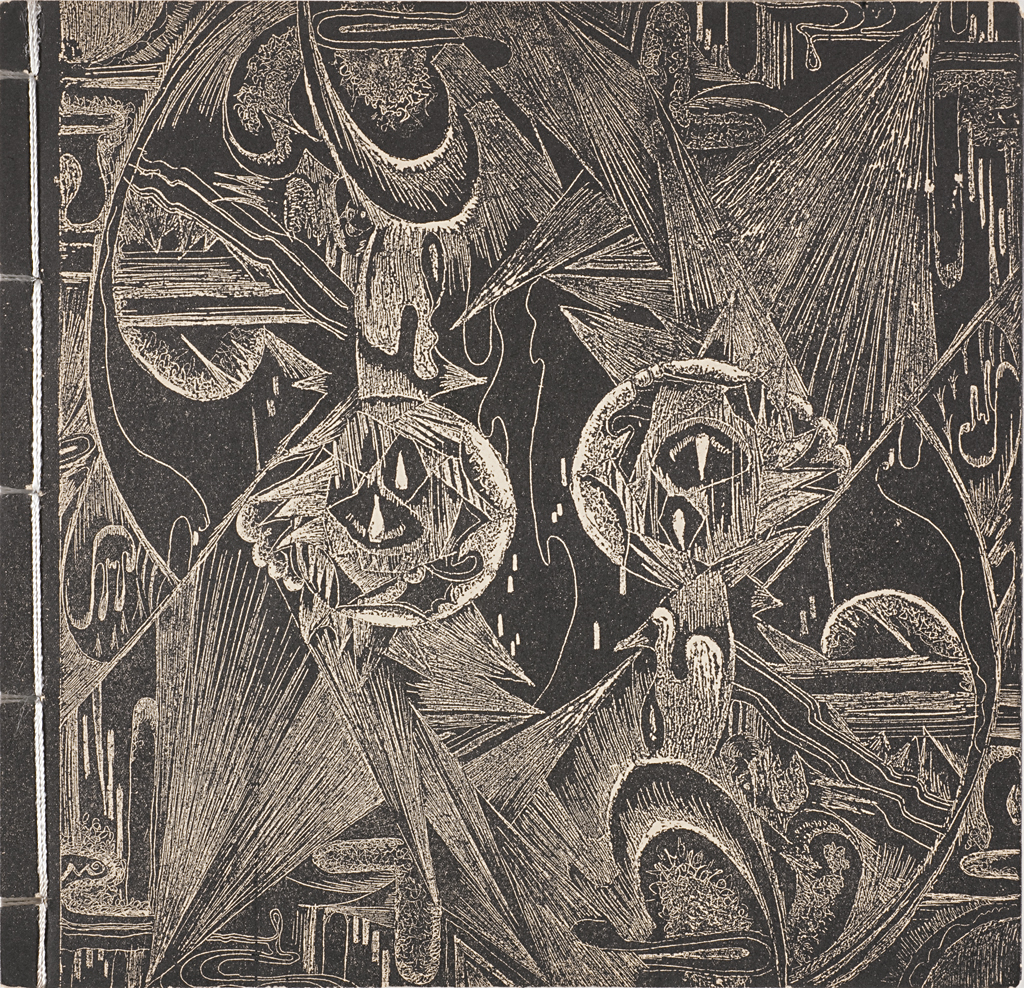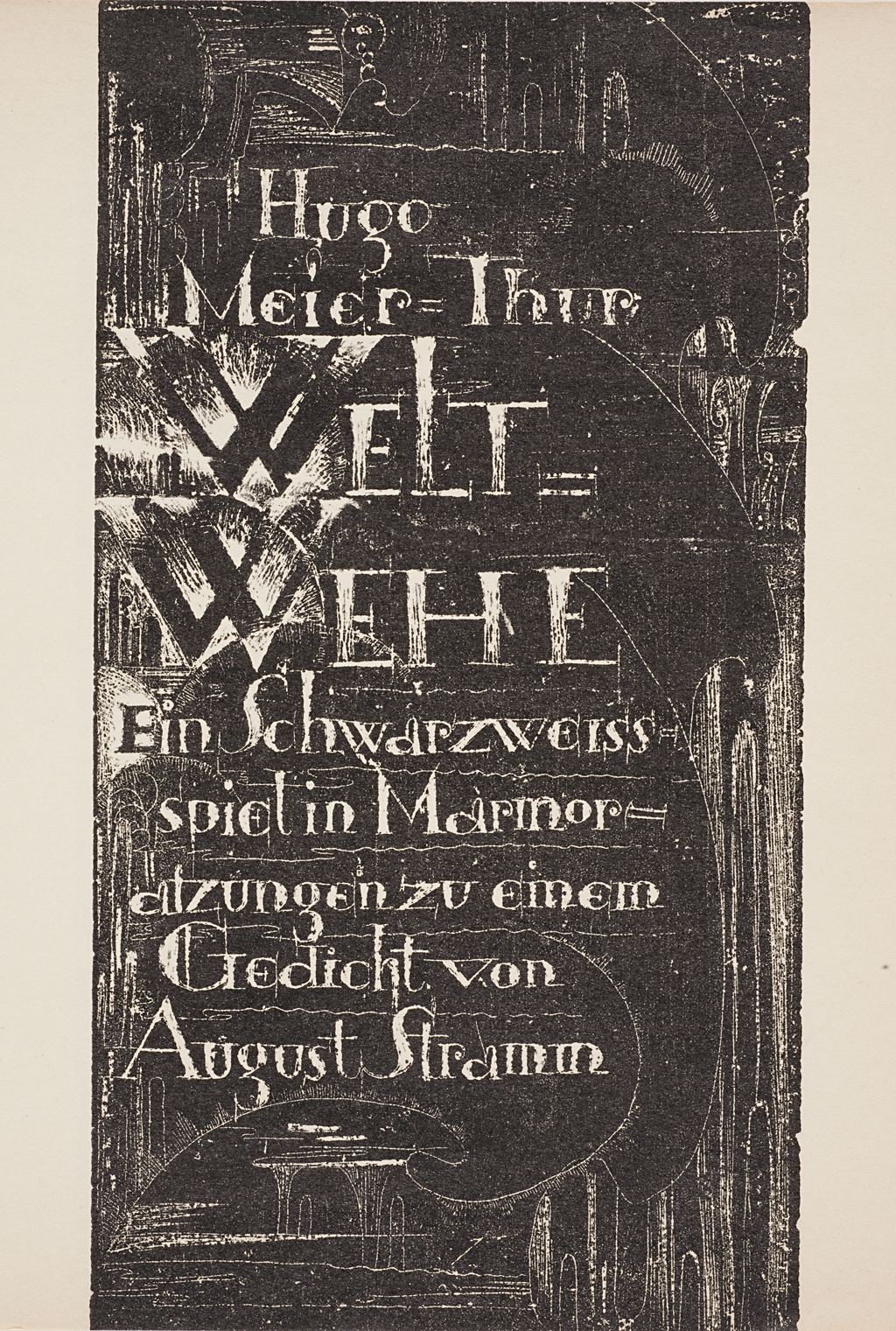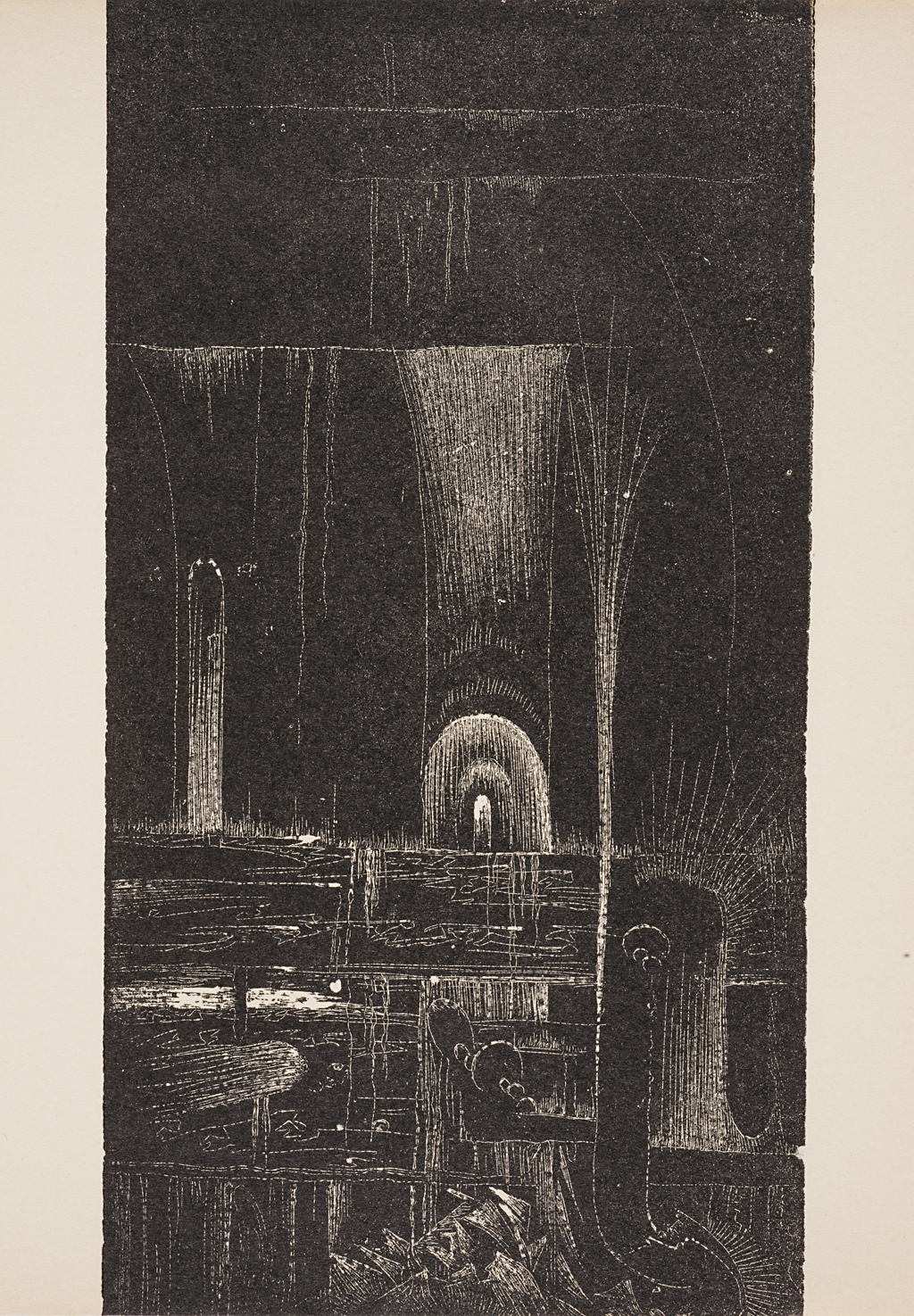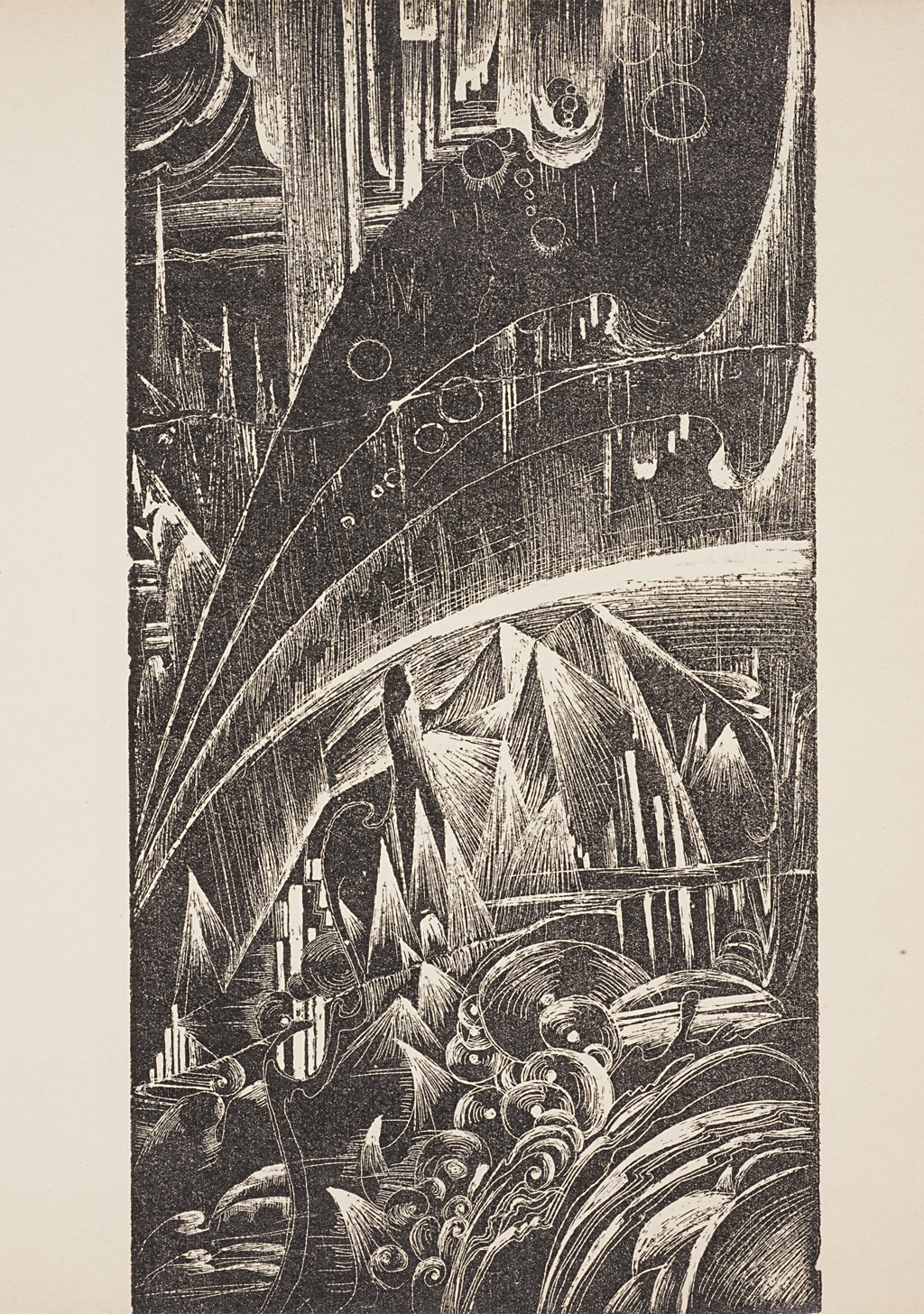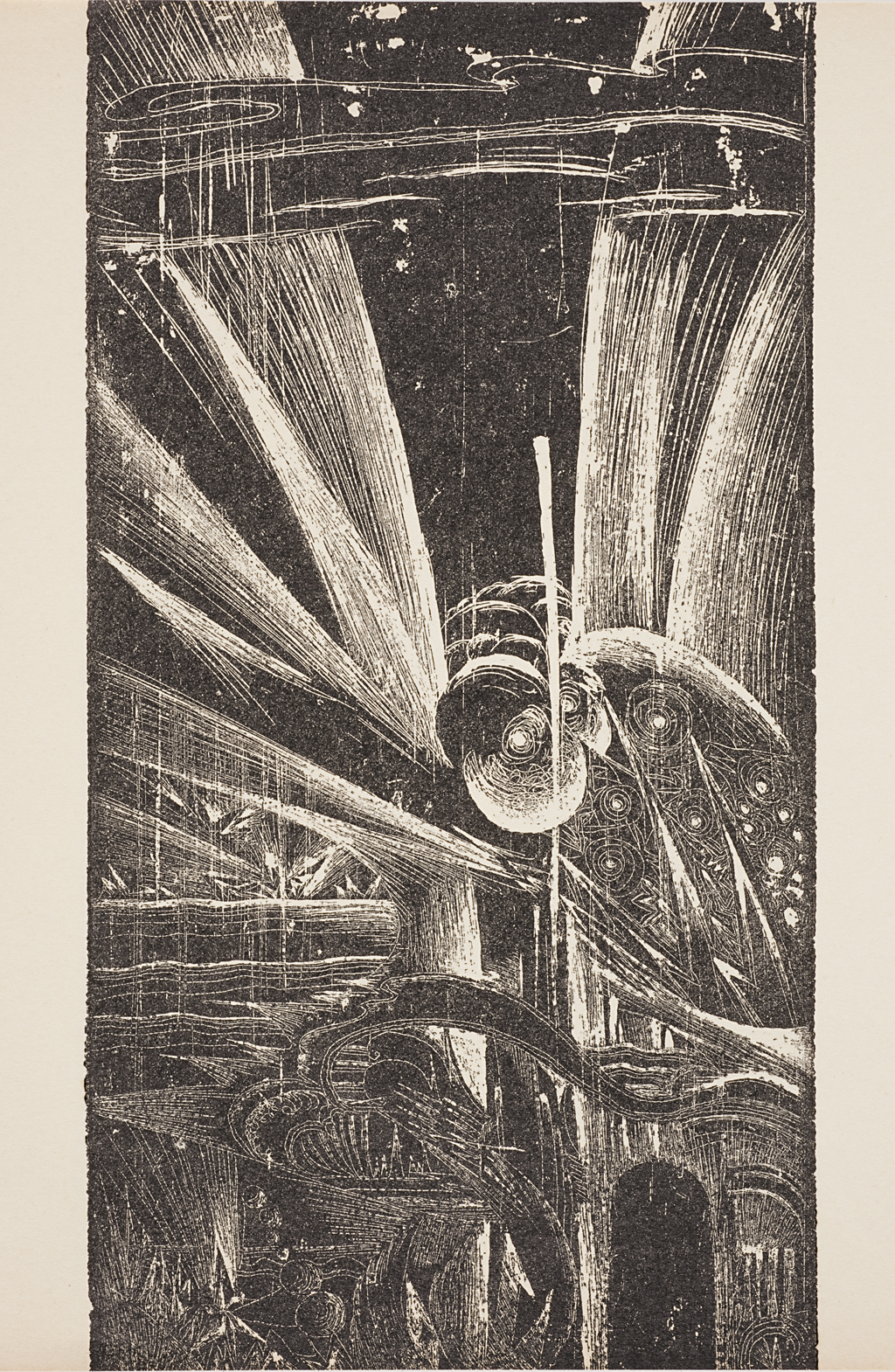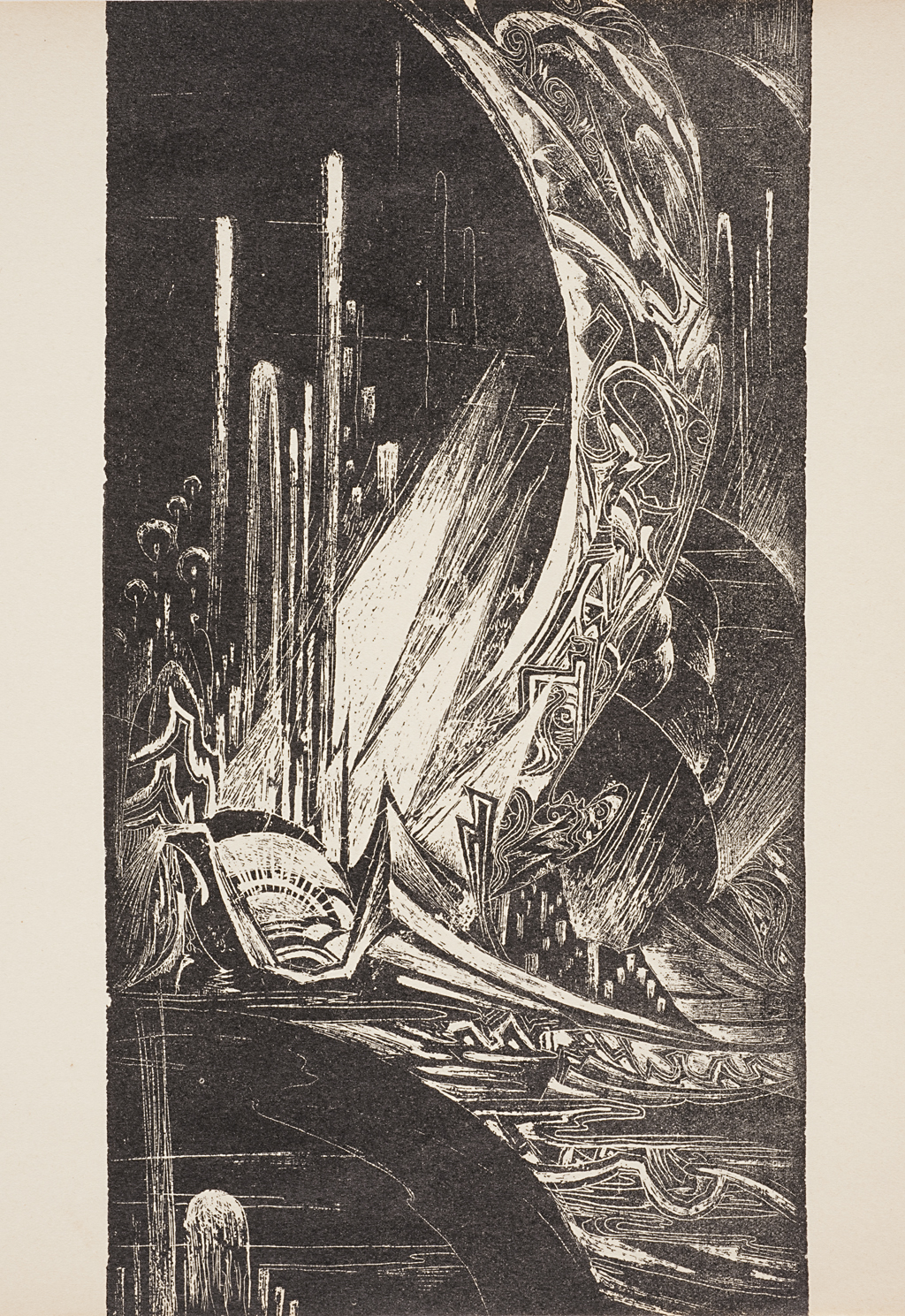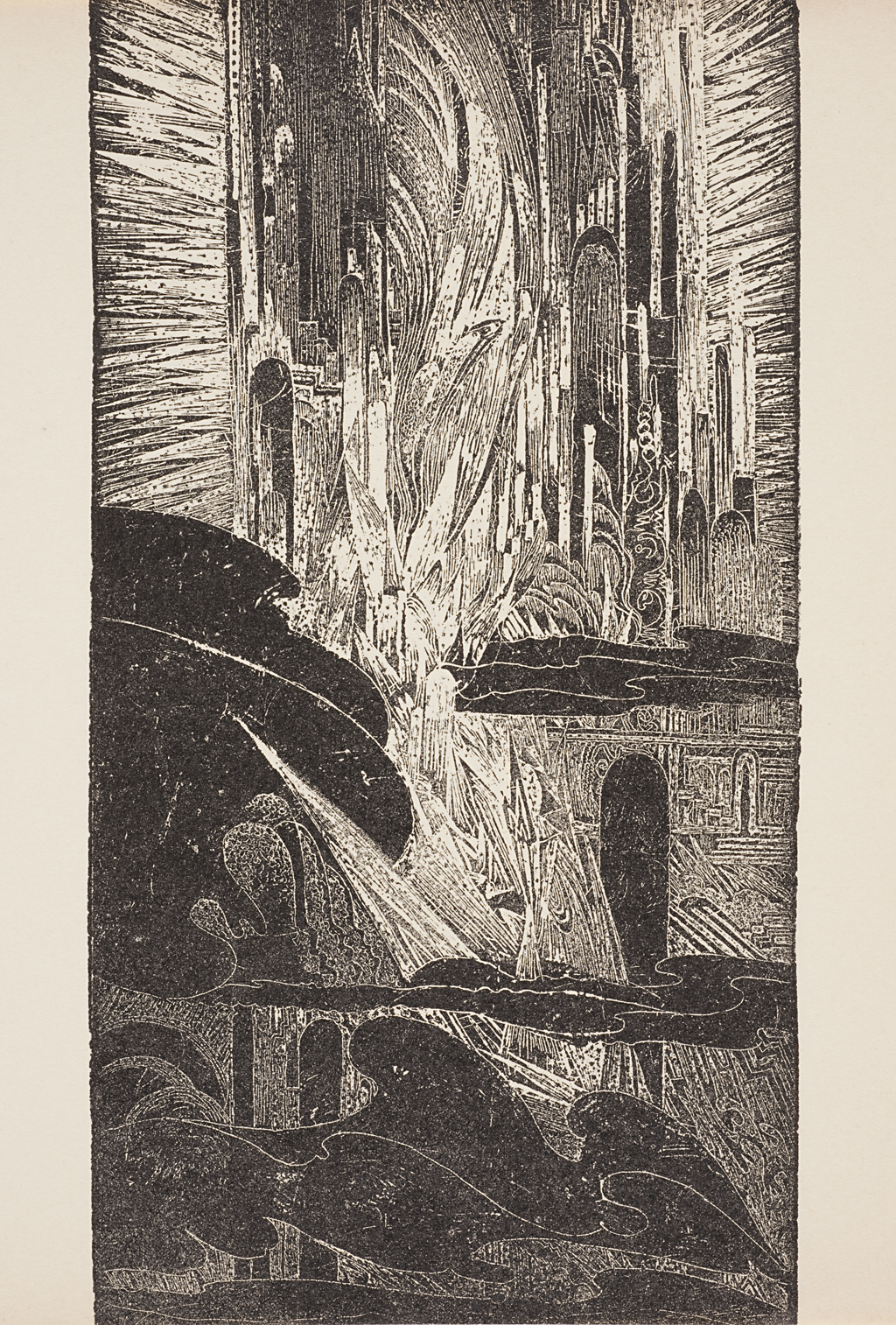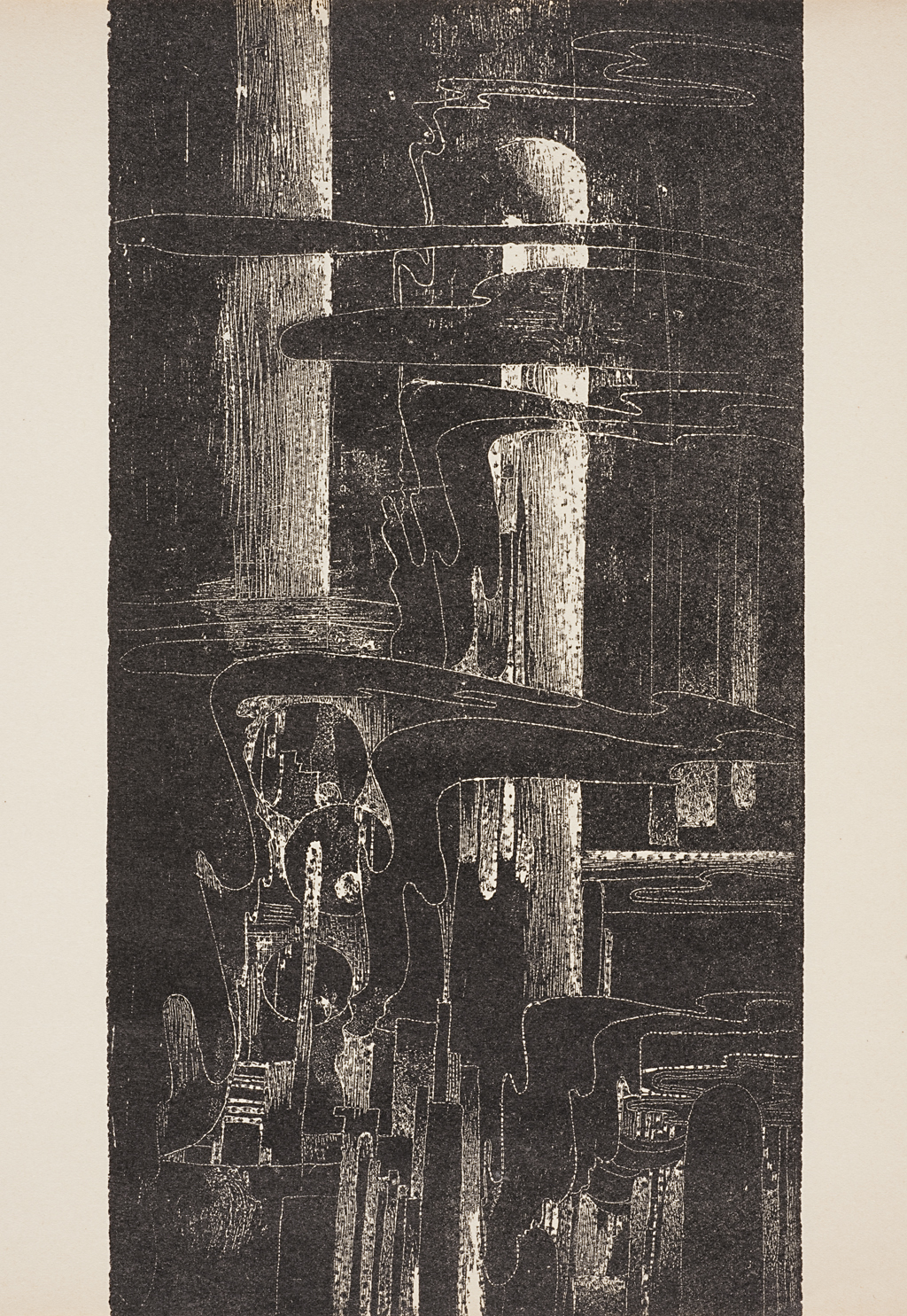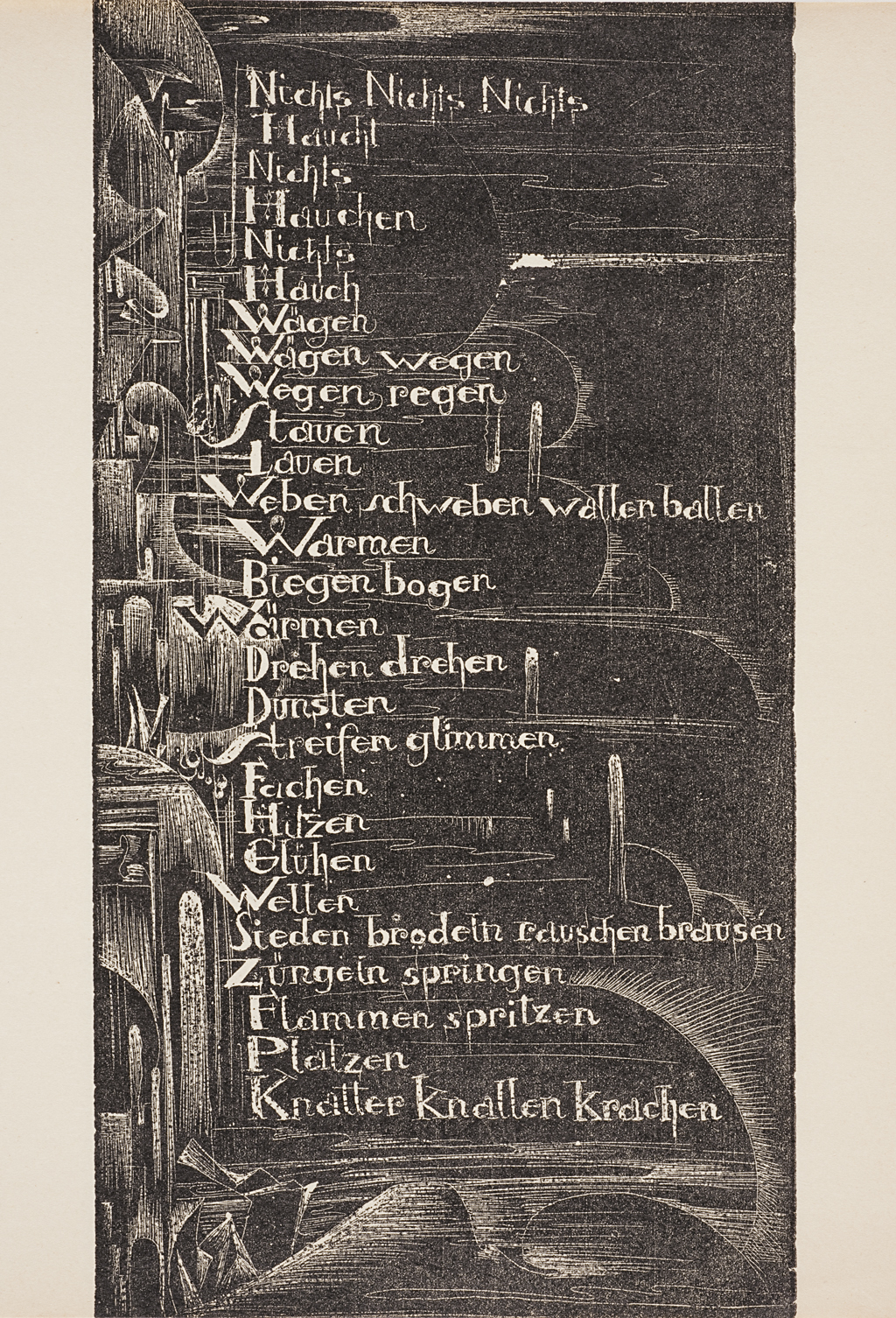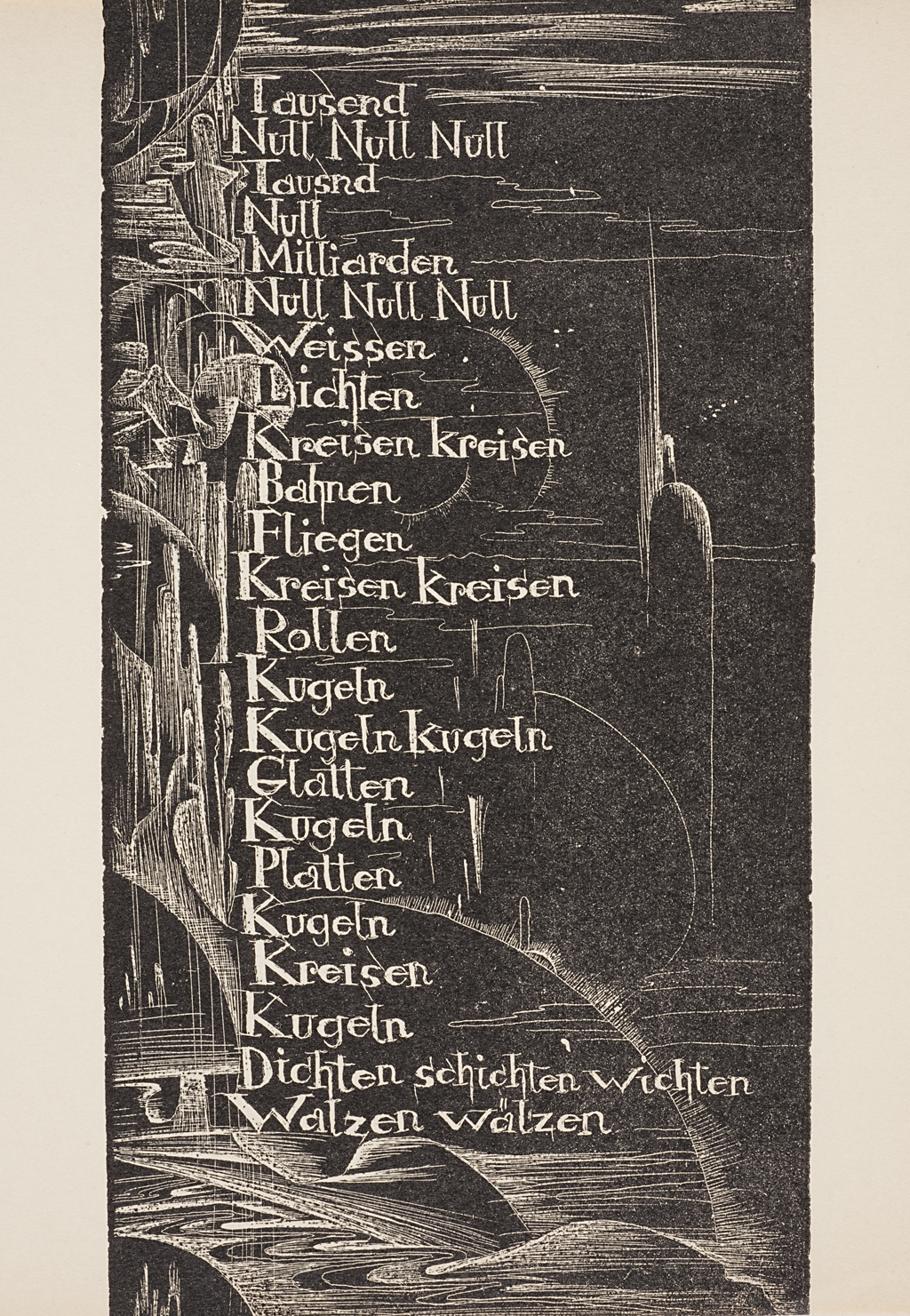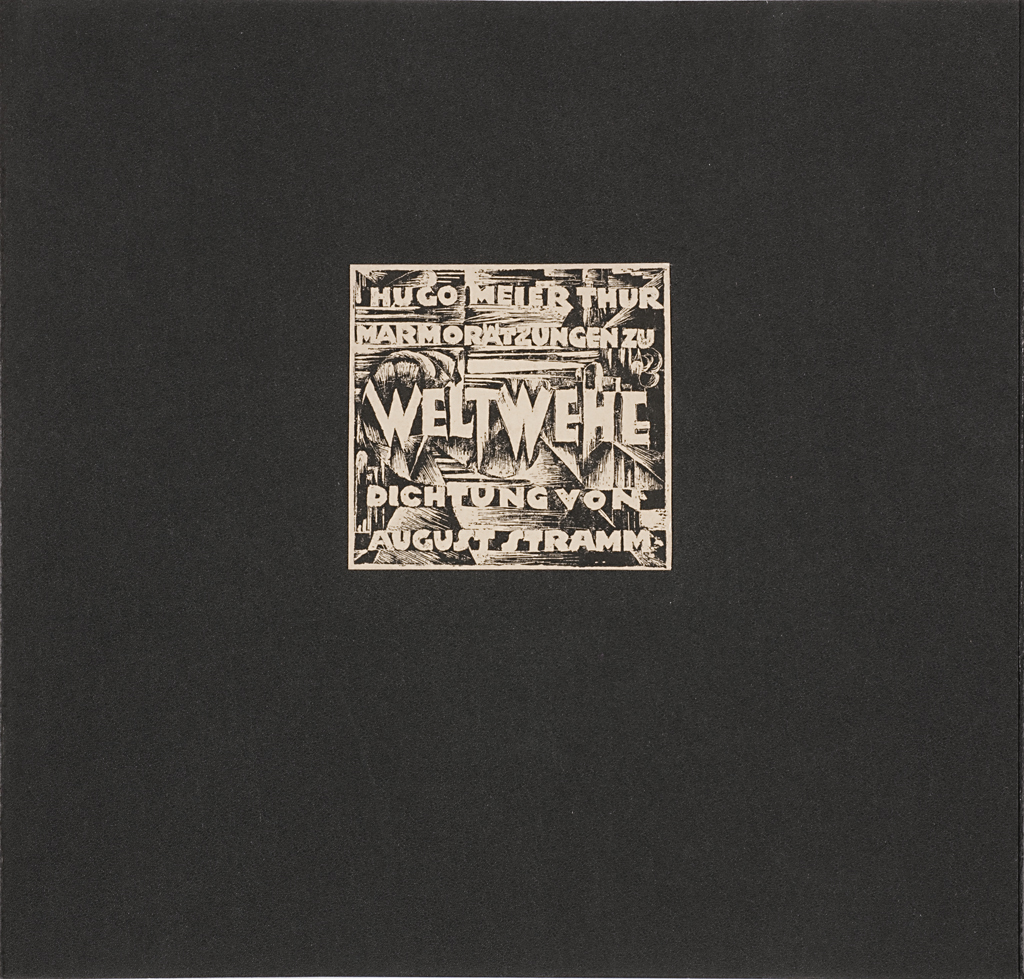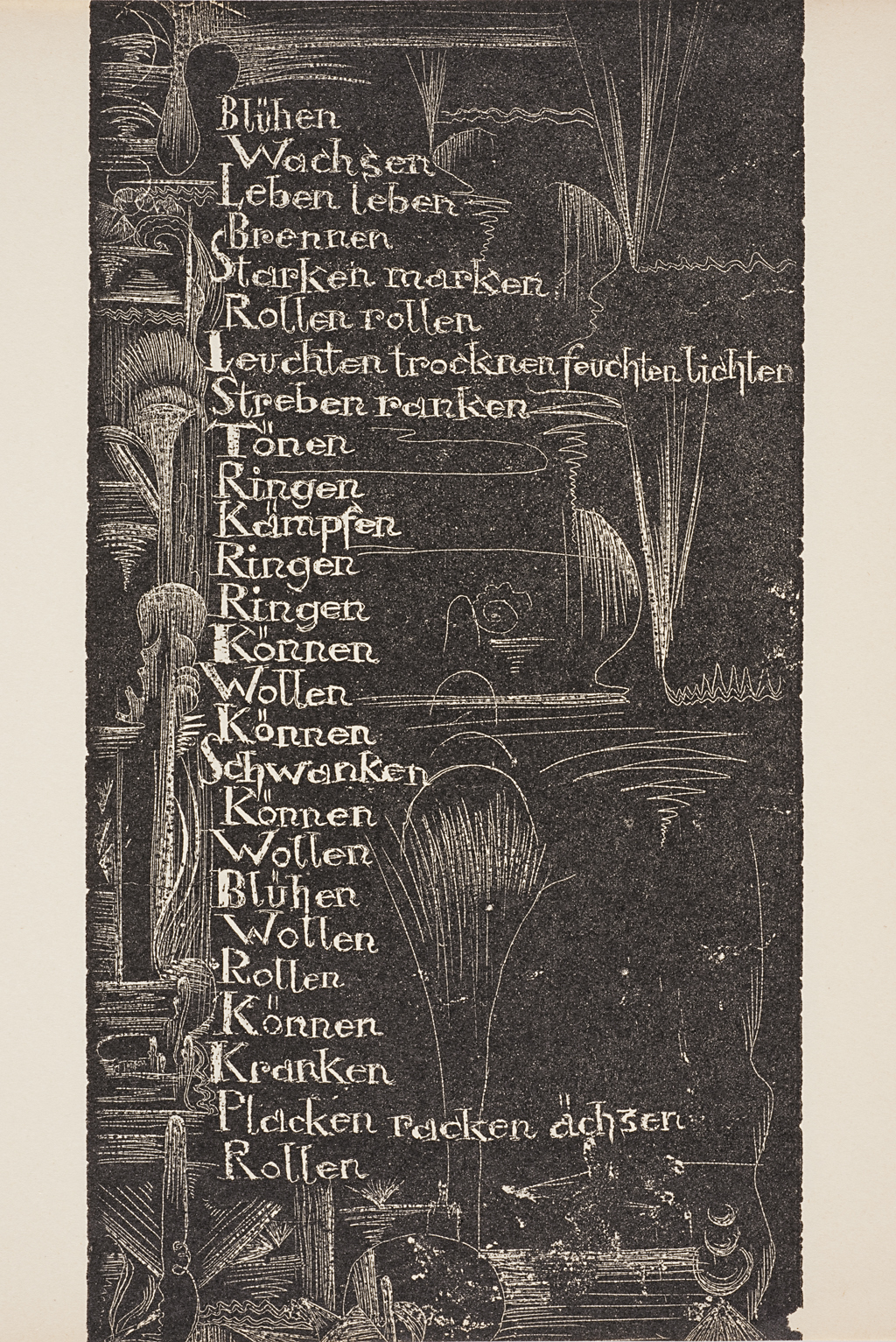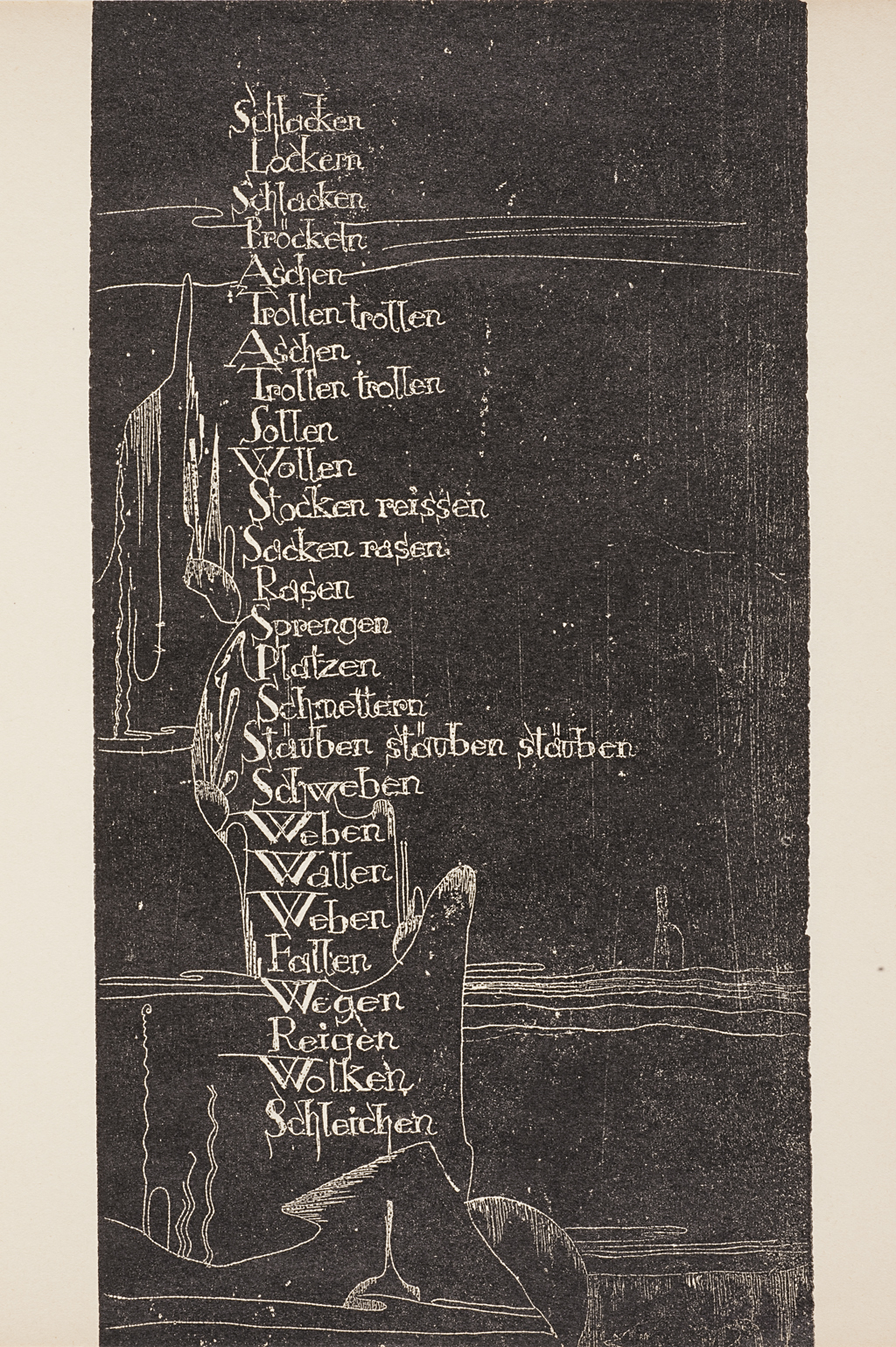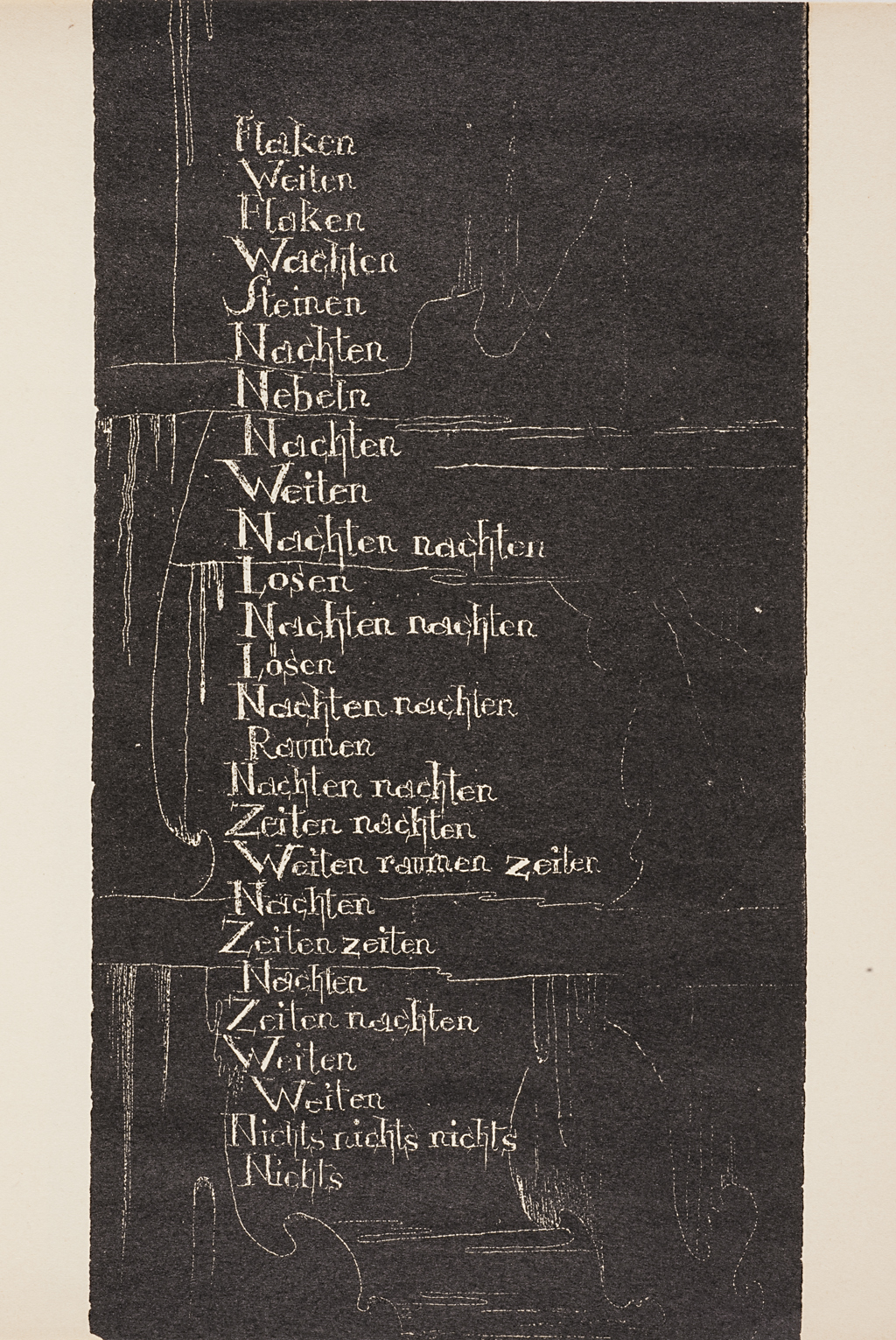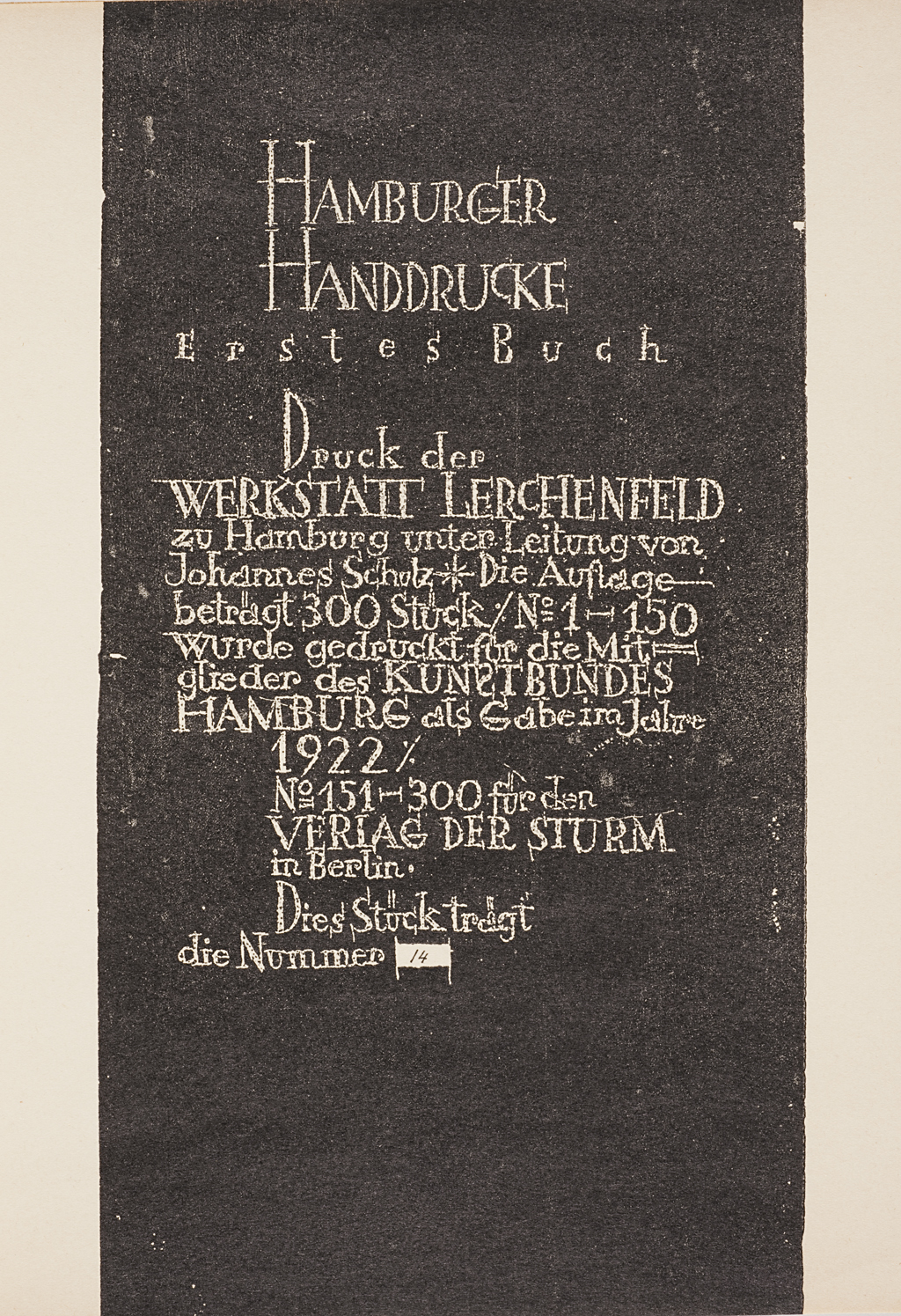Welt-Wehe / Ein Schwarzweisspiel in Marmorätzungen zu Einem Gedicht von August Stramm (World-Woe / A black & white play in marble etching for a poem by August Stramm), Hugo Meier-Thur
Artwork Overview

Hugo Meier-Thur, artist
1881–1943
Welt-Wehe / Ein Schwarzweisspiel in Marmorätzungen zu Einem Gedicht von August Stramm (World-Woe / A black & white play in marble etching for a poem by August Stramm),
1922
Where object was made: Germany
Material/technique: marble etching
Dimensions:
Object Height/Width/Depth (Height x Width x Depth): 281 x 290 x 10 mm
Object Height/Width/Depth (Height x Width x Depth): 11 1/16 x 11 7/16 x 0 3/8 in
Object Height/Width/Depth (Height x Width x Depth): 281 x 290 x 10 mm
Object Height/Width/Depth (Height x Width x Depth): 11 1/16 x 11 7/16 x 0 3/8 in
Credit line: Museum purchase: Museum of Art Acquisition Fund
Accession number: 2009.0023.a-p
Not on display
If you wish to reproduce this image, please submit an image request
